North England Standing Stones
North England Standing Stones is in Prehistoric North England, Standing Stones.
2700BC. The The Devil's Arrow's [Map] are three monoliths, the second highest in England, near Boroughbridge in Yorkshire. The tallest stone is 6.85m high. There are likely to have originally been more. William Camden mentions four stones in his Britannia, noting that "one was lately pulled downe by some that hoped, though in vaine, to finde treasure." The outer stones are 110m and 60m away from the central stone and form an alignment that is almost straight, running NNW-SSE.
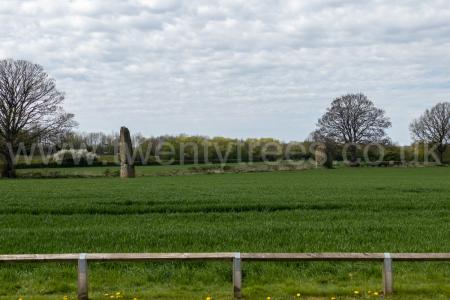
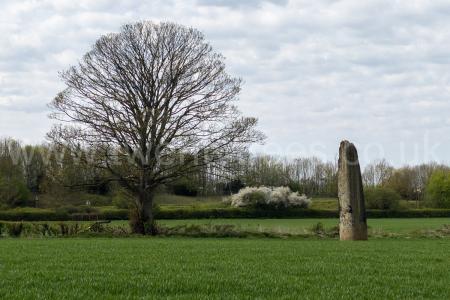
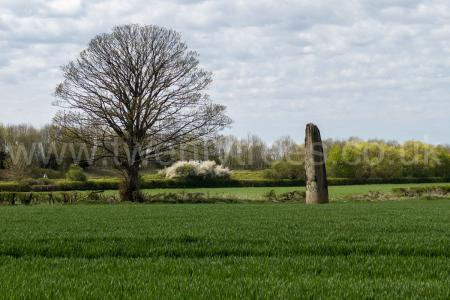
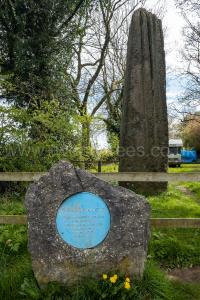
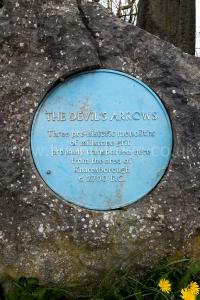
Long Meg [Map] is a Standing Stone 25m south-west of Long Meg and Her Daughters [Map].
Rudston Monolith [Map]. Is the tallest megalith (standing stone) in the United Kingdom at 7.6m tall.
Europe, British Isles, England, East Yorkshire, All Saints Church, Rudston Monolith [Map]
Rudston Monolith [Map]. Is the tallest megalith (standing stone) in the United Kingdom at 7.6m tall.
Archaeologia Volume 5 Section V. Mr. Pegge, on the Rudston Pyramidal Stone [Rudston Monolith [Map]]. Read May 9, 1776.

Europe, British Isles, England, North Yorkshire, Boroughbridge, The Devil's Arrow's [Map]
2700BC. The The Devil's Arrow's [Map] are three monoliths, the second highest in England, near Boroughbridge in Yorkshire. The tallest stone is 6.85m high. There are likely to have originally been more. William Camden mentions four stones in his Britannia, noting that "one was lately pulled downe by some that hoped, though in vaine, to finde treasure." The outer stones are 110m and 60m away from the central stone and form an alignment that is almost straight, running NNW-SSE.





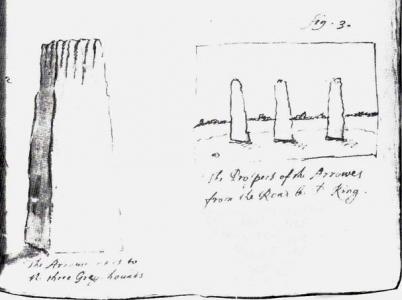 1687. Drawing of the The Devil's Arrow's [Map] by John Aubrey (age 60).
1687. Drawing of the The Devil's Arrow's [Map] by John Aubrey (age 60).
Avebury by William Stukeley. Boroughbridge. The stones, as much famed by the name of the Devil’s Arrows [The Devil's Arrow's [Map]], as misrepresented by writers, stand in some fields, half a mile west of the Roman road south of Boroughbridge. Some think them Roman, though they regard not any Roman work hereabouts: some say they are factitious, though plain stone as possible. They are stones of very large dimensions, and have been hewn pretty square, much as those at Stonehenge; but silly people have knocked off the edges: their height is very great: they were very taper and well-shaped, and much of an obelisk form; but the tops are decayed, and long furrows worn down on all sides along the tenderest part of the grain of the stone. I remarked, that they all lean somewhat southward. The stone is intirely composed of small white crystals, unperishable by weather: they are certainly natural, and brought about ten miles off, from the west, where more such lie above ground in great plenty. Three now stand; one was taken away, as all report, to make a bridge over the bec a little eastward. The cross near the church is of the same stone. These stones stood 200 foot asunder, pretty near in a line north and south: the first stone westward is not so high as the other, but broader much, and stands square, or perpendicular to the line of direction; it is 8½ foot broad, 4½ thick, 23 foot about; the second in the next pasture is square each side, but not precisely; it is 5 foot broad, 4 foot thick, 18 foot fquare: the next is twice as far distant, and beyond the road, of a figure much like the former, but rather higher, as that is higher than the first; this is 5 foot by 4: the two last are very beautiful obelisks, and their height about 25 foot, as I guess. The ground this fine monument stands on is high, and declines every way a little from it; the great river [River Ure], the brook, and some low ground to the south, hem it in as it were. Mr. Gale, and the beforementioned clergyman, some time since dug under one to the foundation, and found that it was about five foot under ground, and fastened into its seat by stones laid in clay, quite around it, as a wall: they put four half-pence, in a leaden box underneath, of queen Anne, Vigo, &c. and filled it up again. I could not commend them for it, as it could only tend to mistead the curious of future times.
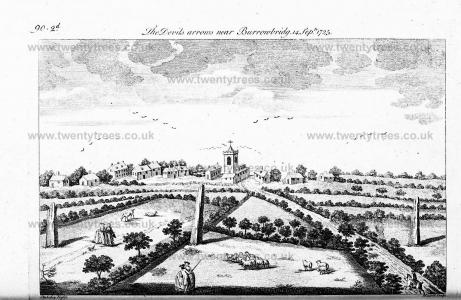
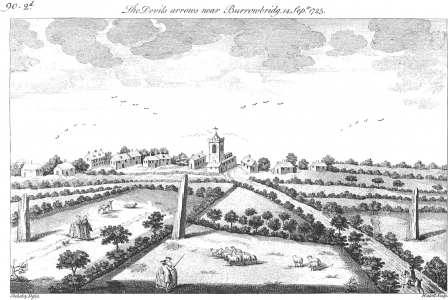 14 Sep 1725. Drawing of the The Devil's Arrow's [Map] by William Stukeley (age 37).
14 Sep 1725. Drawing of the The Devil's Arrow's [Map] by William Stukeley (age 37).
 1895. Drawing of the The Devil's Arrow's [Map] by Percy Robinson.
1895. Drawing of the The Devil's Arrow's [Map] by Percy Robinson.